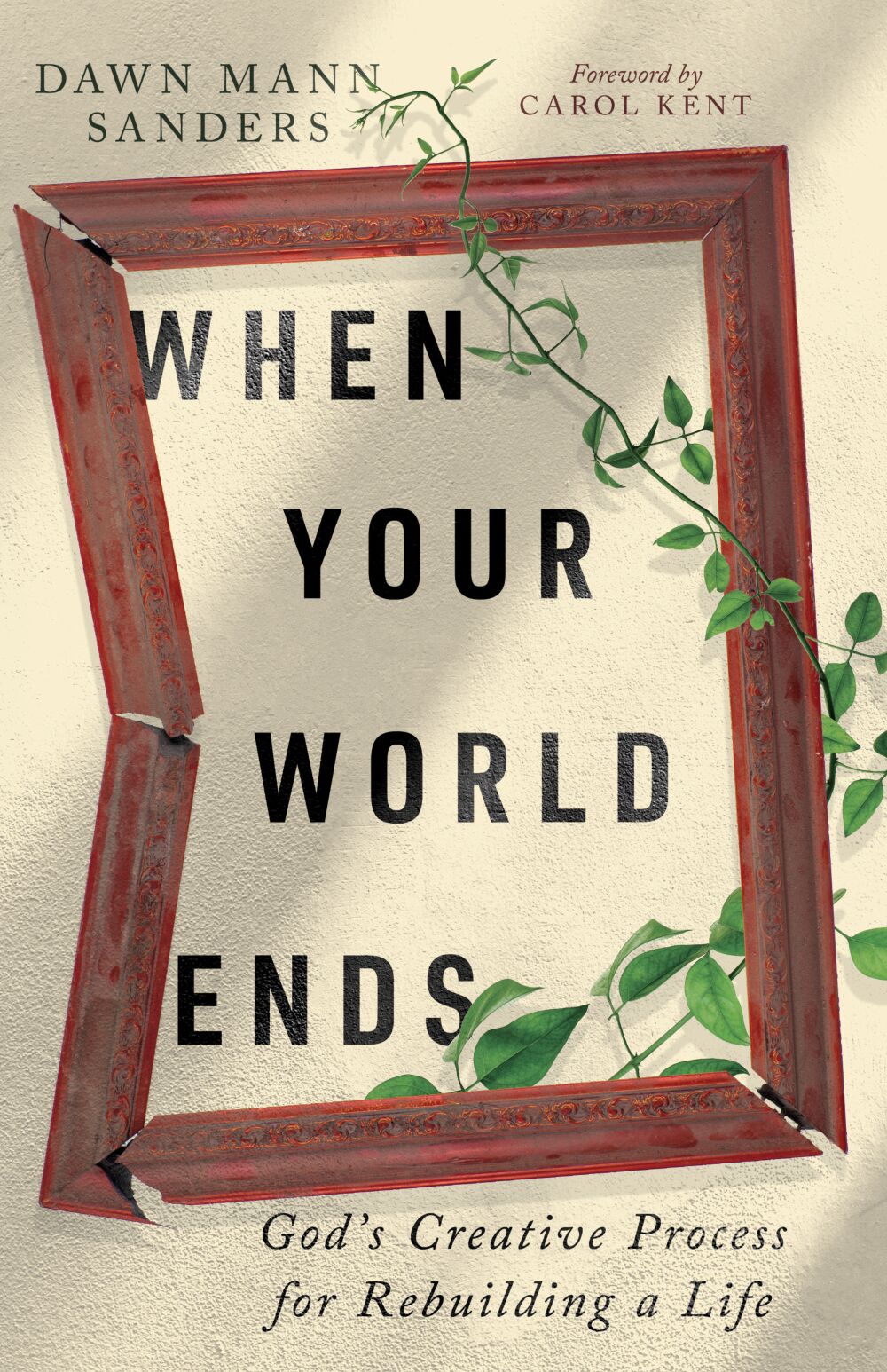When he first started courting me, Reggie wined and dined me in an effort to show me a good time. Shortly after taking our seats in the restaurants and beginning to look at the menu, Reggie, a food lover, would ask, “Would you like to join me in an appetizer?” or something to that effect. The first time, I, a fellow foodie, replied, “Sure.” Then, proceeded to look at the appetizer menu.
You see, before Reggie gave me the choice, I hadn’t intended to partake in an appetizer. But after he gave me the option, I gave in to the temptation and joined him. I agreed because it was easier than watching him eat it when I could simply reach out and partake too. Rather than put myself through that I immediately gave in to the temptation.
Isn’t that the way it is with temptation? You are fine until the opportunity presents itself. Then, once presented, the challenge—for some of us, the struggle—begins. Share on XPart 7 of Choosing Wisely
Today’s article is the seventh in a series of articles on decision-making when creating our new lives. This series is a deep dive into Genesis 2:15-17, the passage describing Adam’s first choice. Throughout this deep dive, you’ll find guidelines I extracted from the Scripture that we can use to choose the activities that make up our lives. Today’s post continues our discussion on boundaries, specifically from the perspective of exceptions.
Then the Lord God took the man and put him in the garden of Eden to tend and keep it. And the Lord God commanded the man, saying, "Of every tree of the garden you may freely eat; but of the tree of the knowledge of good and evil you shall not eat, for in the day that you eat of it you shall surely die."
~ Genesis 2:15-17
The Three Boundaries in the Garden of Eden
God gave Adam three boundaries in His command around Adam’s diet. The first boundary was the Garden of Eden itself. The second boundary was the trees or plants. The third boundary was the tree of knowledge of good and evil.
1. The Garden of Eden
To recap my previous discussion on the first boundary, Adam was free to eat from any tree or plant in the garden. God doesn’t say the trees outside the garden were deadly. This leads me to believe that though not deadly, the trees outside the garden weren’t Adam’s best choice for sustenance. No, Adam would find the best choice—the juiciest, freshest, tastiest food—inside the garden. Since they weren’t the best choice, God set a boundary between the plants outside and those inside the garden, where Adam would’ve found his best food options.
2. Trees
To recap my previous series on trees, the first food God provided came from trees or plants. Trees are living organisms that sprout from the ground (Genesis 1:11-12). Adam and the animals are also living organisms that came from the ground (Genesis 1:24-25; 2:7). Though all living creatures come from the ground, God only provided plants as food. Designating only plants as food was another boundary God set. This time the boundary was between the plants and the other living creatures in the garden.
3. The Tree of Knowledge of Good and Evil
The third boundary of the tree of the knowledge of good and evil is the most noticeable from the way the Scripture is written, and I suspect the most talked about, because it’s preceded by the word “but”. The word “but” is a conjunction that contrasts these two clauses. It contrasts the freedom in the first clause of eating from any tree in the garden with the exception in the second clause—the tree of the knowledge of good and evil.
The tree of the knowledge of good and evil met the first two criteria:
- It was a tree and
- It was in the garden.
Yet, though it met the first two criteria, the tree of the knowledge of good and evil was off limits. God commanded Adam to not eat of it. It was the exception to the rule.
Like with Reggie’s offer of an appetizer, this was a temptation—a course of action that is wrong or unwise.
Now, the other boundaries also provided temptations. Food outside the garden or inside the garden, but not of a tree were temptations, but the tree meeting these two temptations made it different.
The two differences about the temptation presented by the tree of the knowledge of good and evil from the others were:
- This food met the first two criteria and
- The outcome or risk involved in giving into this food.
And both of these things play into how tempting the food was.
The First Two Criteria
By meeting the first two criteria, the food of the tree of the knowledge of good and evil looked, felt, and smelt good. In fact, everything God created was good, so in some way, the tree of the knowledge of good and evil was good—if only as a test for humanity.
But though it was a good test, it wasn’t good for human consumption. And there was no way to tell except its origin. To make matters worse, it was regularly seen and readily available.
There may have been food outside the garden, but it wasn’t easily seen. Adam and Eve would have to leave the garden to see it. Why would they leave the garden when they had all they needed in the garden? Since it was outside the garden, it was out of sight and out of mind. Unlike the trees outside the garden, the tree of the knowledge of good and evil was inside, and as such, was easily seen.
Things easily seen and readily available are so much harder to resist. Share on XThen, there are the other living creatures. Though edible, the other living creatures were mobile. So, though inside, Adam and Eve would’ve had to catch them to eat them. So, they weren’t readily accessible. But the food from the plants in the garden literally grew on trees. They needed only to pluck it or grab it. On the other hand, anything growing from the tree of the knowledge of good and evil was inside in a fixed location, and as such, was within reach.
This was the same temptation I encountered with the appetizer. Once on the table, it was easily seen and readily available. And things easily seen and readily available are so much harder to resist. These two things, like with the appetizer, made it a greater temptation.
The Outcome or Risk
Greater temptations require a big enough why—a reason big enough to tip the scales in the right direction. Why? You might ask. Because otherwise, it is too easy to indulge in the temptation—like I did with the appetizer. With the appetizer, I didn’t have a good enough reason to not take Reggie up on his offer.
My indulging in an appetizer once in a while isn’t life or death. For some though, it is. For instance, for those with seafood allergies, even one of the shrimp appetizers I have been known to enjoy is a different story. Even if they once enjoyed shrimp, developing an allergy to them tips the scales.
People with seafood allergies are less likely to be tempted because they aren’t as free to eat them. They don’t have the power to eat them without a cost. And in this case, the cost is their lives.
For most, life is just too big a risk.
The Risks of the Garden of Eden
What we far too often fail to realize is that each boundary is a choice with its own risks. Eating outside the garden posed risks, such as using the energy God gave Adam to tend the garden outside the garden and eating food that wouldn’t provide sufficient energy to tend the garden once he returned. Similar risks were involved in eating any of the other living creatures inside the garden.
Like with the appetizer, the odd indulgence with the first two boundaries doesn’t cost much, but overindulging does.
We want to pay attention to the more noticeable boundaries where the exceptions are more clearly defined. We also need to pay attention to the other boundaries too because they can kill you—or your hopes and dreams—too, just slower. Share on XReggie had a heart attack while out jogging at the age of 45 and died. He literally dropped dead on the street. Atherosclerosis, “hardening of the arteries,” caused his heart attack. Years of overindulging hardened and blocked his arteries.
It all started with one overindulgence. Then, one overindulgence led to one too many.
So, yes, we want to pay attention to the more noticeable boundaries where the exceptions are more clearly defined. They kill fast.
We also need to pay attention to the other boundaries too because they can kill you—or your hopes and dreams—too, just slower.
So, the guideline I have for you today is:
Guideline 15: Weigh the risk before choosing an option.
The “Choosing Wisely” Series:
- Part 1a – Choosing Wisely
- Part 1b – Getting to the Root
- Part 1c – Fueling Your New Life
- Part 2 – A Habitat for Humanity
- Part 3 – The Order of Rest
- Part 4 – The Right Conditions for Rest
- Part 5 – What’s the Best Decision-Making Process for Creating New Lives?
- Part 6 – Five Freedoms When Creating a New Life
- Part 7 – The Risks of Giving Into Temptation
- Part 8 – How Knowledge Plays in Decision Making
- Part 9 – How Morality Applies to Decision Making
- Part 10 – Biblical Concepts of Time When Making Decisions
- Part 11 – Some Certainties We Have in This Life
- Part 12 – How Will Your Relationship End?
COMPLETE LIST OF GUIDELINES
Guideline #1: Choose activities that align with our assignments.
Guideline #1a: The availability of activities that align with our new lives depends on the level of effort we put into completing our assignments.
Guideline #2: Choose activities that support our assignments.
Guideline #3: Choose activities that provide what our lives and assignments need to live, grow, and stay healthy so that we can produce the best fruit.
Guideline #3a: Choose activities that balance the things related to our assignments that we want to do with the things related to our assignments that we need to do.
Guideline #4: During seasons of plenty, choose activities that for seasons of scarcity by storing excess resources.
Guideline #5: Choose activities that are fueled or empowered by the Son.
Guideline #5a: Choose activities that are fueled by clean energy—energy that doesn’t pollute the environment and has a positive impact on the environment by counteracting the pollution produced by “dirty energy.”
Guideline #5b: Engage in activities that are fueled by renewable energy—energy that is never depleted or is constantly replenished.
Guideline #5c: Choose activities that are fueled by universal energy—energy that is accessible anywhere.
Guideline 6: Choose activities that worship and serve the Lord.
Guideline 7: Choose activities that obey the Lord’s commands.
Guideline 8: Choose activities that are enjoyable and satisfying.
Guideline 9: Choose to complete activities in order.
Guideline 10: Choose to rest before beginning your assignments.
Guideline 11: Choose to rest your new life on a solid, unchanging foundation.
Guideline 12: Always start with God.
Guideline 13: Choose the best option.
Guideline 14: Choose activities that allow you to maximize your power and influence.
Guideline 15: Weigh the risk before choosing an option.







